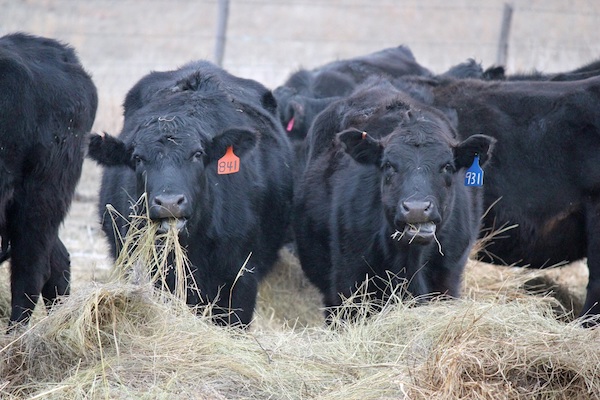When is Protein Supplement Overfed?
January 2017

The cattle markets are not what they were the last couple of years and many producers are re-evaluating their production costs to determine where expenses might be trimmed. It is a well- established fact that feed costs make up the majority of cowherd expenses in most operations. Therefore, it stands to reason, re-evaluating feed costs is a good place to start.
A 1200 pound gestating, non-lactating cow requires about 10 pounds of TDN and 1.8 pounds of crude protein per day. More importantly than crude protein however, is rumen degradable protein which is necessary for the bacteria in the rumen to adequately digest the forage she consumes. Research conducted at the Gudmundsen Sandhills Laboratory indicated that cow would require approximately 0.88 pounds of rumen degradable protein per day.
Most producers assume that if the forage is less than 8% crude protein then additional protein needs to be supplied. However, prairie hay that is 6.5% crude protein with 62% of that being rumen degradable and contains 50% TDN would meet this cow’s requirements. We can assume that a 1200 pound cow will eat 22 pounds of dry matter. Therefore, 22*0.065 = 1.43 pounds of crude protein, but, 1.43*.62 = 0.88 pounds of rumen degradable protein, which meets the requirement. Additionally, 10 pounds of TDN would also be supplied, meeting the energy requirement as well.
If a producer had 500 cows and assumed these cows needed one pound of a $400/ton protein supplement for 60 days, that producer could spend an unnecessary $6000 in two months.
A key factor in whether or not this low quality forage could meet the cow’s need without supplementation would be whether the cow consumed at least 22 pounds of dry matter. Therefore, forage availability in a grazing situation would need to be monitored carefully, and waste needs to be accounted for when calculating the amount of hay to feed. Another key factor to keep in mind is that as calving draws near, the cow’s nutrient demands rise, and energy needs double once lactation starts.
Sending forage samples to a commercial laboratory for analysis allows producers to have a better idea of what forage quality is available for their herd and how much supplemental feed is necessary. Carefully monitoring body condition of the cows also allows producers to make proactive changes to supplement programs as necessary. University of Nebraska extension educators and specialists are available to help producers balance rations for their beef cattle herds.
Reference
Karla H. Jenkins, Nebraska Extension Cow/Calf, Range Management Specialist
University of Nebraska–Lincoln
back to Cow-calf, Bull and Heifer Nutrition